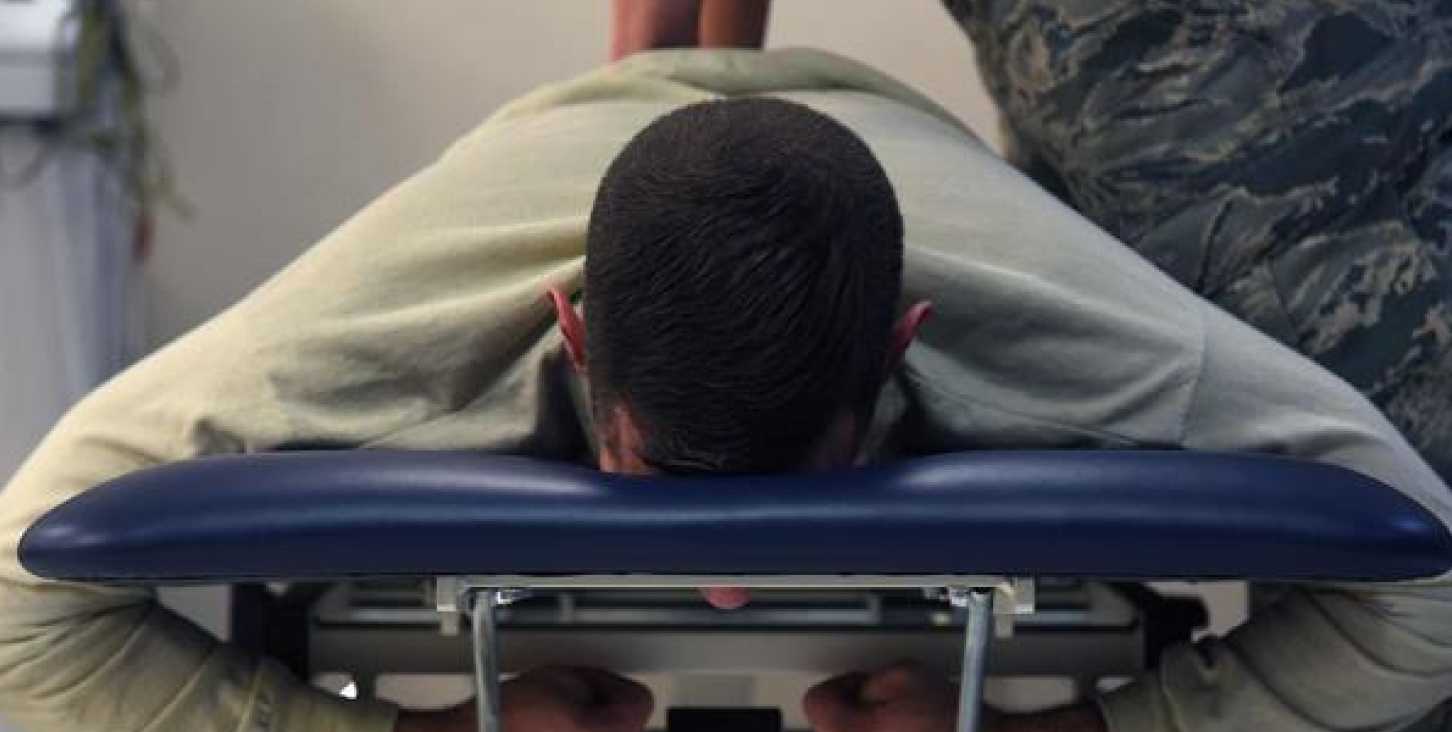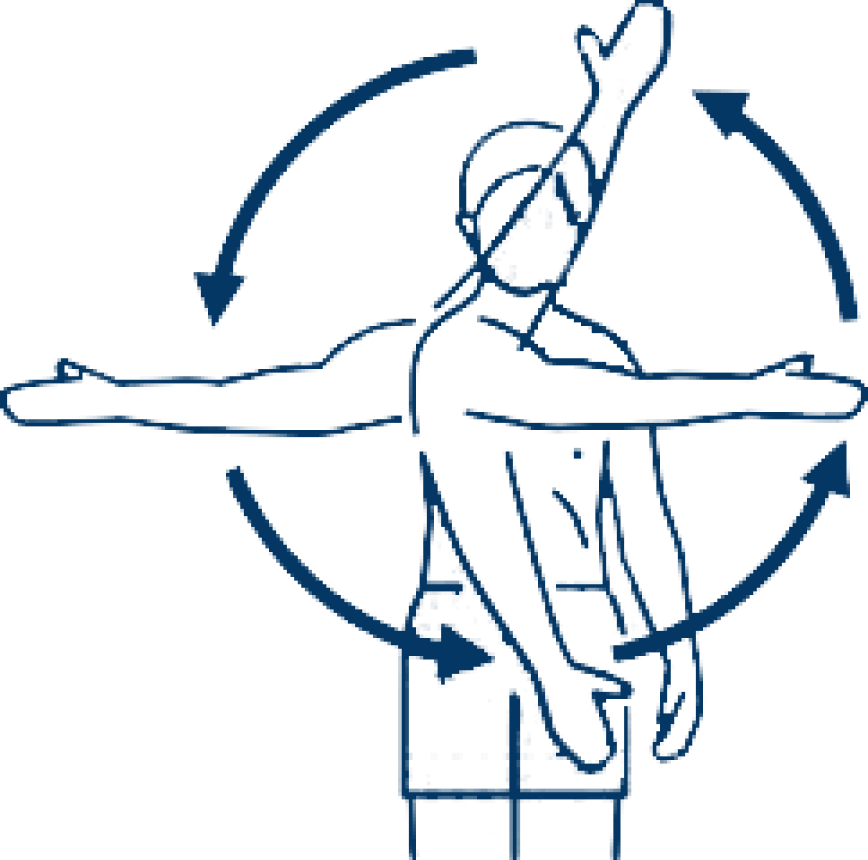Our aggressive and experienced Veterans law attorneys will fight for you.
“Honestly, if it wasn’t for Berry Law and David, I probably would have just kept going with what I had before and not try to do it again. Because the process on your own is almost too big to handle.”
– Luke O., Marine Veteran
Contact Us NowVeterans frequently express confusion and frustration about both service connection and the evaluation of back conditions. Since back conditions can affect all aspects of a Veteran’s life, let’s look at the VA disability rating for back pain and provide clarity to understand how to maximize VA benefits for a back condition.

Applying for and receiving the correct VA disability benefits for back conditions connected to your time in service can be difficult.
Whether you have problems finding a nexus or proving to the VA just how debilitating your back injury is, you may find yourself needing assistance when applying for VA disability compensation for injuries to your back.
At Berry Law, our team of dedicated VA appeals lawyers can help you appeal an unfavorable decision by the VA. We are Veterans helping Veterans—former officers, enlisted personnel, and military families. We have served Veterans nationwide for several decades. And we can help you, too. Contact our team today online or at 888-838-7754 to schedule a free, confidential case evaluation.

One challenging aspect of back conditions is the potential length of time between the original injury and when you realize that the injury has become chronic. One of the most frequent stories we hear about back injuries is,
“I hurt my back in service, but I was young and pushed through it.”
Over the years, of course, that back injury can reoccur and worsen. Then, years after military service, a Veteran may realize that the original in-service injury has resulted in a long-term disability.
When applying for service connection for a back condition, Veterans can do a few things to help their claim. The first place to look is within the records from service. If a Veteran injured his or her back while on active duty, there may be reflections of that injury in the records. Keep in mind, that a “smoking gun” document might not be a medical record. It could be a notation from a supervisor excusing the Veteran from their duties, a profile to keep them from doing certain exercises, or something else related to the injury.
It is important to thoroughly search the service records for something related to an in-service injury. Statements by the Veteran or fellow servicemembers describing the injury can also help.
Sometimes, a Veteran has a back condition that is related to service but wasn’t the result of any specific injury in service. That does not mean they have to give up on service connection. It just makes getting benefits a little more difficult. Many Veterans attribute their back problems to service because they worked on their feet doing guard duty every day or because they participated in rucks, jumps, or other high-impact exercises.

For Veterans who did not go to sick call for their back while in the military, they may want to start with the second step: talking to family, friends, or fellow service members who remember their complaints of back pain in service. Buddy statements from those who remember complaints of a stiff or achy back can help trace the source of the injury back to active duty.
Sometimes, a back problem can also be the result of another condition, like foot, knee, or hip problems that change the way a Veteran walks and then causes injury to the back because of compensating movement or altered weight-bearing. In these cases, if the underlying foot, knee, or hip disability can be connected to military service, and evidence shows that disability is at least as likely as not caused or aggravated the back condition, then the Veteran can also receive VA disability benefits for the back condition. In these secondary service connection injury cases, evidence of the underlying disability, as well as the back disability, is necessary.
Once the Veteran has gathered all of the evidence they intend to use to show an in-service injury or circumstance which caused back problems or a connection to another service-connected disability, the next step is usually to get a medical professional to connect it to the current disability.
This is not a legal requirement, but in practice usually, a claim will not be granted without it. This is often the hardest part. Many Veterans go to their compensation and pension (C&P) exams thinking their claim will be granted because they have proof of an injury to their back in military service. However, examiners will often point out that the in-service back problem was resolved before the end of service. They will often use the exit exam from the military to show that the Veteran exited service without any back problems, and point to any delay in the Veteran seeking treatment for a back condition after service.
Veterans should go to their C&P examinations prepared to inform the examiner about the history of the injury and their pain or other symptoms since service. Examiners are required to listen to Veterans’ lay statements, where applicable. Veterans should be ready to give clear statements about how their back was hurt in service, why they may not have sought treatment in service, whether they have had the same recurring problems since service, and the chronicity of their injury, including making it very clear that the current injury is a reoccurrence of the one in service.
If that fails and the VA examiner still does not provide a connecting statement–known as a nexus–between the in-service injury and the current one, the Veteran will probably want to look into getting a private medical opinion to hopefully provide that nexus.
At Berry Law, we are familiar with back disability claims and understand the types of evidence that VA and VA examiners look for in determining whether your back problems are related to military service. If the VA has denied your claim for disability benefits for a back injury or chronic pain, contact us to discuss how we can help you appeal the decision.
Once the uphill battle of service connection for a back injury is over, Veterans are often shocked by their VA disability rating decision. After years of fighting to show that their back pain is related to service, when they finally “win,” the result is disappointing. The average VA disability rating for back pain is only 10 percent.
In general, back injuries are rated low for the anguish and disability they cause. Our attorneys understand how the VA rates back conditions and secondary conditions. We can help increase your VA disability rating and make it closer to actual compensation for the impact your back disability has on your life.
There are two ways the VA compensates for back pain. The first relates to range of motion. The second is specific to “intervertebral disc disease” and is based on incapacitating episodes.
Most people with back problems don’t spend a lot of time thinking about how far they can bend or twist; they’re too busy being in excruciating pain. That focus is where many Veterans inadvertently get themselves in trouble. Pain of any severity, even life-altering, agonizing pain, is ratable at only 10 percent. There are limited exceptions, but, for the most part, appealing to the VA for a higher disability rating based on pain will not result in an increased evaluation.
The general rating formula the VA system uses for rating back disabilities can be extremely unfair in this way. Often a Veteran’s service-connected condition will begin causing more back pain than it used to, so the Veteran files a VA disability claim for an increased rating. However, the arbitrary rules and regulations for rating back disabilities do not care about the level of back pain the Veteran experiences. The only thing that really affects most Veterans’ VA ratings for back pain is their range of motion.
For disability ratings, The VA categorizes the spine into two areas:
The VA assigns ratings based on the following ranges of motion in the thoracolumbar spine, and it typically evaluates each section of the spine independently:
For the cervical spine, the VA assigns the following ratings based on range of motion:
Even if a Veteran’s range of motion is normal but they experience pain when moving, they should still qualify for the minimum rating of 10%.
To obtain a VA disability rating of 100%, a Veteran needs to show that their entire spine (including both the thoracolumbar spine and the cervical spine) is entirely frozen or in an unfavorable position. This means the Veteran essentially has no range of motion in their entire spine or that the spine is fixed in a curved or un-neutral position. The VA may combine the highest ratings for the thoracolumbar and cervical spines to arrive at 100%.
Achieving a 100% rating is difficult and typically requires a severe loss of function. If a Veteran has any movement in their spine, or their spine is fixed in a “neutral” position, the Veteran will likely receive a lower rating.
To determine the range of motion for VA rating purposes, the VA will send the Veteran to an examination. The examiner should use a measuring tool to determine the extent to which a Veteran can bend or twist in various directions in degrees. The proper rating under the VA rating schedule is based on how many degrees of range of motion the Veteran has in one or more planes of motion.
To determine the range of motion for VA rating purposes, the VA will send the Veteran to a compensation and pension (C&P) examination. The examiner should use a measuring tool called a goniometer to determine the extent to which a Veteran can bend or twist in various directions in degrees. The proper rating under the VA rating schedule is based on how many degrees of range of motion the Veteran has in one or more planes of motion.
However, range of motion is only one aspect of back pain and loss of functionality. Some Veterans can exhibit a good range of motion but still experience considerable pain.
At the examination, the examiner should also ask the Veteran whether they experience flare-ups of their back condition and whether their back pain gets worse after certain activities over a period of time. If the Veteran experiences either of these circumstances, the examiner must ask the Veteran whether their range of motion is more limited because of this worsening.
The examiner is legally required to estimate any additional loss of range of motion in degrees during these periods of worsening, and the VA must consider this combined range of motion loss when assigning a disability rating for back disabilities.
Our experience with appealing for a higher VA rating for back pain has shown us that both examiners and the VA commonly skip over this important step when assigning a VA disability rating. Additionally, VA examiners aren’t very clear when they ask these questions at the examination. As a result, it’s important for Veterans making VA disability claims to understand the importance of telling examiners whether they are able to bend or twist less during flare-ups or after use over time (such as prolonged periods of walking, standing, sitting, or bending).

Needless to say, many Veterans are displeased with very low ratings for back conditions that might keep them from working, driving, exercising, or living the way they want. One thing to do about it would be to determine if the Veteran might fall under the alternative diagnostic code relating to intervertebral disc disease and if that would result in a higher rating. If the Veteran does not have incapacitating episodes (which basically means doctor-ordered bed rest) for more than four weeks a year, pursuing an alternative diagnostic code will not help with an increased evaluation.

Another thing to do would be to investigate secondary claims. Back conditions can cause a lot of other issues. One of the most common secondary conditions related to a back problem is radiculopathy, including sciatica.
If a Veteran with service-connected back pain also feels numbness, tingling, or pain down one or both of their legs, buttocks, hips, shoulders, arms, or chest, they might be able to claim radiculopathy secondary to the back condition. Erectile dysfunction, incontinence, and even depression might also be related to a back problem.
Finally, if a back problem is keeping the Veteran from working, they may wish to apply for Individual Unemployability.
Even if they do not qualify, they can apply for extraschedular Individual Unemployability. It can be difficult to obtain unemployability benefits on an extraschedular basis, so it would be helpful to provide a doctor’s opinion stating that the back condition prevents the Veteran from working.
Over the years, our experience has taught us that the VA may apply the wrong diagnostic codes in some cases and award disability benefits that result in lower monthly compensation for Veterans. If you believe you might be entitled to a higher disability rating for back pain and related disabilities, contact us today to review your case.
Finally, if a back problem is keeping the Veteran from working, they may wish to apply for IA total disability rating based on individual unemployability due to service-connected disabilities (TDIU).
Our monthly newsletter features about important and up-to-date veterans' law news, keeping you informed about the changes that matter.